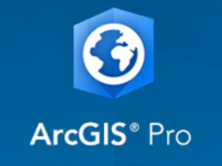I am very excited to tell you Esri’s Dev Team has decided to reverse their stance on not supporting map annotation and graphics in ArcGIS Pro. Originally it had been posted that there was no intention to support this functionality in ArcGIS Pro. I had been told this was because map annotation and graphics did not perform well when published to web maps and services. ArcGIS Pro is heavily optimized for producing maps which will be published to ArcGIS Online or Portal for ArcGIS.
However after getting an overwhelming number of requests backed with use cases on GeoNet (https://community.esri.com/ideas/10410-graphics-and-free-text-in-arcgis-pro-maps?commentID=74862#comment-74862), they have listened to the users and have now added this functionality to the ArcGIS Pro production plan. More than likely this will not be included in the next release (version 2.4), as that should be coming soon. But it will be in a future release. This is great news. I use this functionality in ArcMap all the time to create exhibits and maps for reports.
I should mention that ArcGIS Pro does support graphics and text in layouts. As well as support Geodatabase annotation. Currently it does not support adding annotation and graphics in the maps (formerly called Dataframes in ArcMap).
Thank you Esri ArcGIS Pro Dev team. This is very welcome news.

